- All events
- Academic Calendar
- Institute Holidays
- Events Calendar
Loading...
- Dec 13:00 PMMoving to Profitability? Alleviating Constraints on Microentrepreneur LocationCarolyn Pelnik (World Bank)
- Dec 14:00 PMEric Verhoogen At MIT, joint with Harvard
- Dec 14:00 PMPublic Finance/Labor Seminar"Path Dependence in the Labor Market: The Long-run Effects of Early Career Occupational Experience" | Jesse Bruhn (Brown)
- Dec 14:00 PMTBAAlan Sorensen (UW Madison)
- Dec 14:15 PMLit TeaCome by for snacks, and tea with Literature Section friends, instructors, students, etc. What are you reading? What 21L classes are you taking or hoping to take? This event is specifically geared towards undergrads; but open to friends of the community that engage in the literary and humanities at MIT.
- Dec 14:30 PMAlgebraic Topology SeminarSpeaker: Daniel Spiegel (Harvard Univesity)Title: A Classifying Space for Phases of Matrix Product StatesAbstract: Alexei Kitaev has conjectured that there should be a loop spectrum consist- ing of spaces of gapped invertible quantum spin systems, indexed by spatial dimension 𝑑 of the lattice. Motivated by Kitaev’s conjecture, I will detail a concrete construction of a topological space 𝐵 consisting of translation in- variant injective matrix product states (MPS) of all physical and bond di- mensions, which plays the role of Kitaev’s space in dimension 𝑑 = 1. Hav- ing such a space is a useful tool in the discussion of parametrized phases of MPS; in fact, it allows us to define a parametrized phase as a homotopy class of maps into 𝐵.The space 𝐵 is constructed as the quotient of a contractible space 𝐸 of MPS tensors modulo gauge transformations. The projection map from 𝐸 to 𝐵 is a quasifibration, from which we can compute the homotopy groups of the classifying space 𝐵 by a long exact sequence. In particular, 𝐵 has the weak homotopy type 𝐾(ℤ, 2) × 𝐾(ℤ, 3), shedding light on Kitaev’s conjecture in the context of MPS.
- Dec 14:30 PMEric Verhoogen, Columbia UniversityWhat Do Market-Access Subsidies Do? Experimental Evidence from Tunisia
- Dec 16:00 PMAuthor Talk: Rewiring DemocracyJoin security technologist Bruce Schneier and data scientist Nathan Sanders as they discuss their new book, Rewiring Democracy: How AI Will Transform Our Politics, Government, and Citizenship, in conversation with MIT’s Crystal Lee.Together, they will explore how to cut through the AI hype and examine the many ways AI is transforming democracy—for better and for worse.In this highly readable and advisably optimistic book, the authors describe how the sophistication of AI will fulfill demands from lawmakers for more complex legislation, reducing deference to the executive branch and altering the balance of power between lawmakers and administrators. They show how the scale and scope of AI are enhancing civil servants’ ability to shape private-sector behavior, automating either the enforcement or neglect of industry regulations. They also explain how both lawyers and judges will leverage the speed of AI, upending how we think about law enforcement, litigation, and dispute resolution.Copies of Rewiring Democracy will be available for purchase and signing after the talk, courtesy of the MIT Press Bookstore.December 1 6pm - 7pm $5
- Dec 16:00 PMWoodblock Printing: Seasonal CardsExplore centuries-old artistic traditions through new fabrication technology in this 3-part workshop.After an introduction to woodblock printing techniques, you’ll craft your own prints across three sessions. First, learn how to use the Museum’s laser cutter. Next, use design software to transform photos, words, and/or graphics into bold outlines. Lastly, ink your laser-cut blocks and add color.Use your new skills to make seasonal cards or create artistic prints in any style!Participants must be available for all three sessions. No prior experience necessary.This is an 18+ workshop series.Session Dates:December 1, 2025 December 8, 2025 December 15, 2025$120
- Dec 16:45 PMArgentine Tango Class SeriesJoin us on Monday evenings for Argentine tango classes with outstanding instructors. Whether you are completely new to tango, or already have some experience, you will find a friendly environment in which to learn new things and improve your technique. You don't have to bring a partner, since the classes involve rotations with all participants.Full Series: Sep 15, 22, 29, October 6, 13, 20, 27, Nov 3, 10, 17, 24, Dec 1, 8, 15.For all info and registration, visit following link.
- Dec 18:00 PMWomen's Basketball vs. CaltechTime: 7:00 PM ET (4:00 PM PT)Location: Pasadena, CA
- Dec 2All dayExhibit NOW in IMES E25-310, from May 23 onward! Stop by to visit and learn more!
- Dec 210:00 AMExhibition: AI: Mind the GapThe irony of artificial intelligence is that it often reveals more about human intelligence than machines themselves.From AI in the home to robots in the workplace, the presence of AI all around us compels us to question its potential and recognize the risks. What has become clear is that the more we advance AI technology and consider machine ability versus human ability, the more we need to mind the gap.Researchers at MIT have been at the forefront of this evolving field. The work presented in this exhibition builds on the pioneering contributions of figures such as Claude Shannon and Seymour Papert, while highlighting contemporary research that spans computer science, mechanical engineering, neuroscience, and the social sciences.As research probes the connections between human and machine intelligence, it also underscores the profound differences. With AI now embedded in everyday life — from smart assistants in our homes to robots in the workplace — we are challenged to ask critical questions about its potential, its risks, and the boundaries between machine ability and human capability.Join us in shining light on the tremendous promise, unforeseen impacts, and everyday misconceptions of AI in this riveting, interactive exhibition.Learn more about the exhibition.
- Dec 210:00 AMExhibition: CosmographImagine different worlds in Cosmograph: Speculative Fictions for the New Space Age, an exhibition that brings art and science together to examine possible futures where outer space is both a frontier for human exploration and a new territory for exploitation and development by private enterprise.We are living at the dawn of a New Space Age. What will the future hold? Will space elevators bring humanity's space junk to turn it into useful material here on Earth? Will asteroid mining be the next frontier in prospecting? Will the promise of geo-engineering turn into a nightmare of unintended consequences?Explore these possibilities and more in our new exhibition that blurs the lines between fact and fantasy, and art and science.
- Dec 210:00 AMExhibition: Essential MITMIT is not a place so much as it is a unique collection of exceptional people.What is essential at MIT is asking questions others may not ask, trying the unexpected in pursuit of a greater solution, and embracing distinctive skills and combinations of talents. Whether encompassing global issues, ventures into space, or efforts to improve our daily lives, stories told in this exhibit showcase the process of discovery that sits at the heart of MIT.Delve into the experimental culture and collaborative spirit of the MIT community in this dynamic and interactive exploration of groundbreaking projects and ongoing innovation."MIT’s greatest invention may be itself—an unusual concentration of unusual talent, forever reinventing itself on a mission to make a better world." — President L. Rafael ReifLocated in the Brit J. (1961) and Alex (1949) d'Arbeloff GallerySupported by the Biogen Foundation
- Dec 210:00 AMExhibition: Future TypeHow can code be used as a creative tool by artists and designers?This question motivates the work of the Future Sketches group at the MIT Media Lab. Led by artist and educator Zach Lieberman, the group aims to help us “see” code by using it to make artistically controlled, computer-generated visuals.Explore some of the latest research from the group that uses typography and digital tools to create interactive, creative, and immersive work.Located in our Martin J. (1959) and Eleanor C. Gruber Gallery.
- Dec 210:00 AMExhibition: GansonExperience the captivating work of Arthur Ganson, where his perceptions of the world are choreographed into the subtle movements and gestures of his artistic machines."These machines are daydreams condensed into physical form, computer programs manifesting in three-dimensional space." - Arthur GansonArthur Ganson's medium is a feeling or idea inspired by the world he perceives around him – from the delicate fluttering of paper to the sheer scale of the universe. Combining engineering genius with whimsical choreography, he creates machines to encode those ideas into the physical world. But he invites everyone to draw their own conclusions on the meaning behind the subtle gestures of the machines.Currently on display are a select group of Arthur Ganson's works from our MIT Museum Collection. We expect to exhibit his work in large numbers in the future.
- Dec 210:00 AMExhibition: MIT CollectsMIT Collects features objects and other media from the museum's vast collection, arranged in areas that tell stories, explore themes, and dive into subject areas.Modeling Everything:Models and model-making, both the objects and the action, are vital to every research area at MIT and to the life of the Institute itself. Explore a wide array of models for teaching, discovery, research, and documentation, from ships to crystal structures to architectural design.Radical Atoms:Hiroshi Ishii and the Tangible Media Group at the MIT Media Lab have pioneered new ways for people to interact with computers, with the invention of the “tangible user interface.” It began with a vision of “Tangible Bits,” where users can manipulate ordinary physical objects to access digital information. It evolved into a bolder vision of “Radical Atoms,” where materials can change form and reconfigure themselves just as pixels can on a screen.This experimental exhibit of three iconic works—SandScape, inFORM, and TRANSFORM—is part of the MIT Museum’s ongoing efforts to collect the physical machines as well as preserve the user experience of, in Ishii’s words, making atoms dance.A Sequence of Actions:Developed and operated at MIT, the Differential Analyzer, Whirlwind Computer, and Apollo Guidance Computer were massive and complex projects that involved thousands of people. See historical components and artifacts from this critical era in programming during the mid-20th century and explore how these early programmers influenced today’s digital culture.Technology and the Dream:Through recordings of students, staff, researchers, and community members, listen to personal reflections and gain a sense of the Black experience at MIT. This dynamic audio installation is co-curated with the MIT Black History Project.Totally Useless Things:Toys, puzzles, and play are a significant part of the creative process. Playful activity can shape a research agenda or an entire discipline. Extracurricular play — like MIT's famous hacks — enhances creativity and community. And play itself is a rich field for scientific research. Jump in and learn how curiosity is the fuel that discovery runs on.Located in the Edward O. Thorp Gallery
- Dec 210:00 AMExhibition: Monsters of the DeepHow can you investigate something you cannot see?The challenge of understanding the unknown motivates scientists today, just as it has inspired curious people for centuries.Using material from the Allen Forbes Collection, this exhibit traces the scientific process of observing, measuring, and describing that turned whales from monsters into mammals.Using prints from the sixteenth through the nineteenth centuries, Monsters of the Deep examines how European knowledge about the creatures of the sea was informed by new information from sailors, scholars, and beachcombers, and how that knowledge transformed what people understood about the natural world.Want a closer look at what we have on view? You can explore digitized versions of exhibition objects here.On view through January 2026.
- Dec 210:00 AMExhibition: Radical AtomsHiroshi Ishii and the Tangible Media Group at the MIT Media Lab have pioneered new ways for people to interact with computers, with the invention of the “tangible user interface.”It began with a vision of "Tangible Bits," where users can manipulate ordinary physical objects to access digital information. It evolved into a bolder vision of "Radical Atoms," where materials can change form and reconfigure themselves just as pixels can on a screen. This experimental exhibit of three iconic works — SandScape, inFORM, and TRANSFORM — is part of the MIT Museum's ongoing efforts to collect the physical machines as well as preserve the user experience of, in Ishii's words, making atoms dance.Learn more about the exhibits here, or watch the YouTube video of Hiroshi Ishii's talk at the MIT Museum below.This is an ongoing exhibition in our MIT Collects exhibition.
Load more...
Loading...





